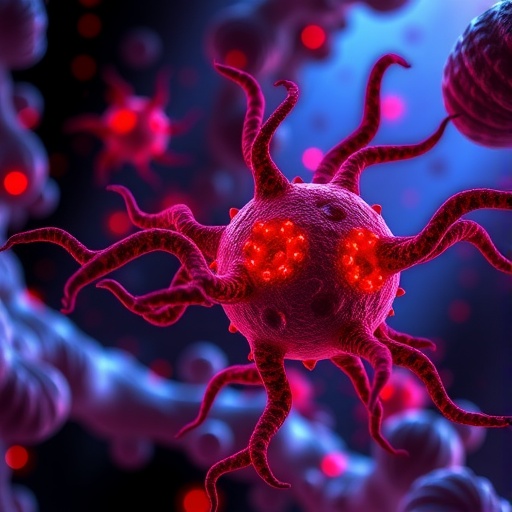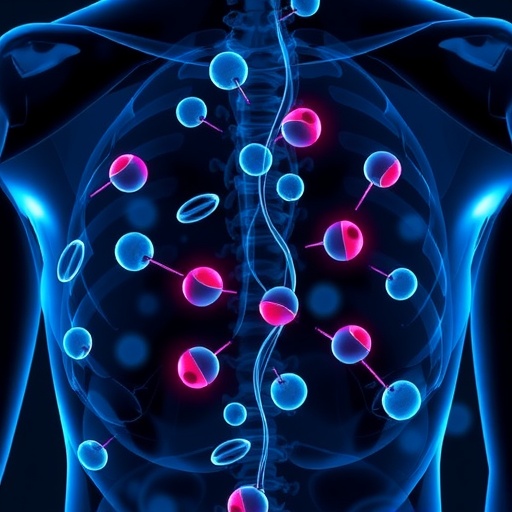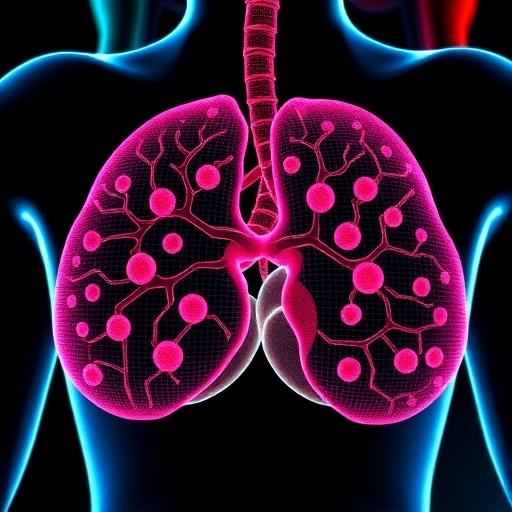In a groundbreaking new study published in Cell Death Discovery, scientists have unveiled the remarkable capacity of panobinostat to amplify the cell-killing effects of adagrasib by inducing autophagy in human non-small cell lung cancer (NSCLC) cells. This discovery heralds a significant advance in the treatment landscape for NSCLC, a notoriously aggressive form of lung cancer with limited effective therapeutic options. By intricately dissecting the interplay between these two agents, the researchers have illuminated a novel molecular mechanism that could reshape how oncologists approach targeted therapies in lung cancer.
Non-small cell lung cancer accounts for approximately 85% of lung cancer cases and remains a leading cause of cancer-related mortality worldwide. Despite advances in targeted treatments, resistance to therapies such as KRAS inhibitors persists, often leading to disease progression. KRAS mutations, particularly KRAS G12C, have long been an elusive target until the development of covalent inhibitors like adagrasib, which specifically target this mutant protein. However, monotherapy with adagrasib, while effective initially, frequently leads to acquired resistance, underscoring the urgent need for innovative combinatorial approaches.
The current study, led by Lu, H. and colleagues, centers on panobinostat, a potent histone deacetylase (HDAC) inhibitor known to modulate gene expression and impact tumor cell proliferation and survival. Previous research has hinted at HDAC inhibitors’ potential to sensitize cancer cells to other treatments by altering epigenetic landscapes. Here, the scientists propose that panobinostat can enhance adagrasib-induced cytotoxicity by promoting autophagic pathways, thereby effectively doubling down on tumor cell demise.
.adsslot_tvZ2Fd5HjL{ width:728px !important; height:90px !important; }
@media (max-width:1199px) { .adsslot_tvZ2Fd5HjL{ width:468px !important; height:60px !important; } }
@media (max-width:767px) { .adsslot_tvZ2Fd5HjL{ width:320px !important; height:50px !important; } }
ADVERTISEMENT
Delving deeper into the mechanistic underpinnings, the study elucidates that panobinostat’s epigenetic modulation leads to upregulation of key autophagy-related genes, such as LC3 and Beclin-1, thereby priming the cells for enhanced autophagic response upon exposure to adagrasib. This coordinated upregulation underscores the potential of epigenetic therapy as a partner to conventional targeted drugs, opening new avenues for combinatorial regimens in lung cancer management.
Beyond cell cultures, the team assessed this drug synergy in xenograft mouse models, observing marked tumor regression and prolonged survival in animals treated with both panobinostat and adagrasib compared to controls. Importantly, toxicity assessments revealed that the combination was tolerated well, with minimal adverse effects, strengthening the case for clinical evaluation of this therapeutic strategy.
This dual-triggering of apoptosis and autophagy presents an elegant strategy to tackle the pervasive issue of resistance in KRAS mutant NSCLC. By manipulating intrinsic cell death pathways, the dual treatment dismantles the cellular defenses that often thwart single-agent therapies. The findings also spark a broader implication that HDAC inhibitors could be harnessed to bolster the efficacy of a wide range of targeted cancer therapies beyond NSCLC.
The research further underscores the complexity of autophagy’s role in cancer, advocating for context-specific modulation rather than blunt inhibition. In this setting, triggering autophagy facilitated drug-induced cytotoxicity rather than promoting tumor survival, highlighting the necessity of precision medicine approaches tailored to the molecular landscape of each cancer subtype.
Intriguingly, the authors note that this synergistic effect may also intersect with immune-modulatory functions, as HDAC inhibitors are known to influence tumor microenvironment and immune checkpoints. While beyond the scope of this initial investigation, this raises compelling prospects for integrating immune-based therapies with panobinostat and adagrasib combinations in future clinical trials.
The study’s advanced use of molecular probes and biochemical assays helped paint a detailed picture of intracellular events, reinforcing the significance of comprehensive mechanistic studies in translational oncology. The revelation that panobinostat primes tumor cells to succumb more readily to adagrasib aligns with the growing ethos that combinational strategies are imperative for overcoming cancer’s adaptive prowess.
Given the mounting evidence, clinical oncologists are likely to watch closely as panobinostat is ushered into trials combined with adagrasib in KRAS mutant NSCLC patients. If these promising preclinical results translate to the clinic, it could radically redefine therapeutic paradigms for one of the most challenging lung cancer subsets.
This study also serves to remind the scientific community about the value of repurposing existing drugs like panobinostat, initially approved for hematological malignancies, in solid tumors where unmet clinical needs abound. By leveraging known pharmacological agents with newly elucidated mechanisms, research can accelerate the bench-to-bedside timeline, offering tangible benefits to patients sooner.
Future research directions proposed by the authors include deciphering biomarkers predictive of response to this drug combination, as well as expanding investigations into other KRAS mutations and cancer types where autophagy modulation could be exploited therapeutically. This comprehensive framework will be critical for tailoring treatments to individual molecular profiles.
In sum, this seminal work by Lu et al. propels our understanding of NSCLC biology forward by bridging epigenetic therapy with targeted inhibition through autophagy induction. The elegant synergy between panobinostat and adagrasib heralds a new chapter in the relentless battle against lung cancer, promising hope for improved survival and quality of life for patients worldwide.
As scientists continue to unravel the intricacies of cancer’s survival tactics, the integration of multi-modal therapeutic strategies that blend targeted drugs with epigenetic and metabolic modulators is poised to deliver unprecedented clinical advances. This study stands as a beacon, exemplifying how meticulous molecular dissection can translate into transformative treatment concepts.
The potential of this breakthrough extends beyond lung cancer, offering a scalable blueprint for combatting other malignancies where resistance mechanisms undermine targeted therapy success. The road ahead will undoubtedly involve complex clinical validation, yet the horizon gleams with optimism fueled by these innovative insights into autophagy and epigenetic synergy.
Subject of Research: Human Non-Small Cell Lung Cancer (NSCLC) and the synergistic effects of panobinostat and adagrasib on triggering autophagy-induced cell death.
Article Title: Panobinostat potentiates adagrasib-induced cell death by triggering autophagy in human non-small cell lung cancer.
Article References:
Lu, H., Fu, W., Xia, Y. et al. Panobinostat potentiates adagrasib-induced cell death by triggering autophagy in human non-small cell lung cancer. Cell Death Discov. 11, 360 (2025). https://doi.org/10.1038/s41420-025-02657-9
Image Credits: AI Generated
DOI: https://doi.org/10.1038/s41420-025-02657-9
Tags: adagrasibautophagy in cancer therapycancer cell proliferation and survivalcancer resistance mechanismscombinatorial cancer therapieshistone deacetylase inhibitorsKRAS G12C mutationmolecular mechanisms in oncologynon-small cell lung cancer treatmentNSCLC treatment advancementspanobinostattargeted therapies in lung cancer





